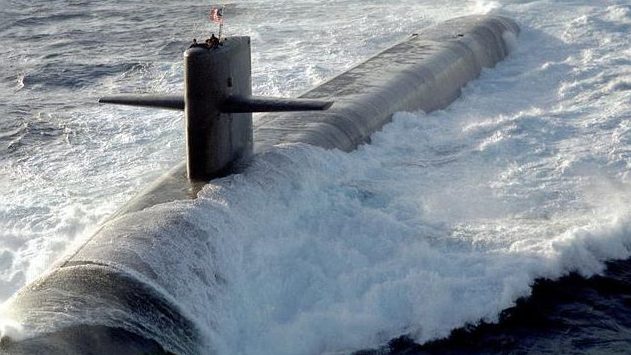Alt-NPR Series #2: From a Triad to a Monad
Emma Claire Foley and Jessica Sleight
In September 2018, Global Zero, in collaboration with the Program of Science and Global Security at Princeton University, released an alternative to the Trump administration’s Nuclear Posture Review — “The End of Nuclear Warfighting: Moving to a Deterrence-Only Posture.” Over the next few weeks, Global Zero will break down the key recommendations of the report and what it means on the path to elimination of all nuclear weapons.
According to the Nuclear Posture Review released in February 2018, the Trump administration wants to dramatically expand nuclear weapons programs and loosen restrictions on their possible use, which would put the world at a greater risk of nuclear catastrophe. Global Zero’s Alternative Nuclear Posture Review argues that by shifting to a deterrence-only strategy (as described in our first post in the series), the U.S. arsenal can be drastically reduced without compromising security or breaking commitments to allies. Pending the elimination of all nuclear weapons, the Alternative NPR found the U.S. can maintain a credible nuclear deterrent with one-third of the current force — five ballistic missile submarines and 650 deployed nuclear warheads. The report also recommends that all missiles be taken off high alert to immediately reduce the risk of launch on false warning.
The U.S. currently maintains a “nuclear triad” — a three-pronged force structure of ground-, sea- and air-based weapons. There are approximately 1,600 deployed nuclear warheads in the United States and on submarines patrolling the Atlantic and Pacific oceans. Another 150 nuclear weapons are based in Europe. By moving to a deterrence-only strategy based on a commitment to never using nuclear weapons first, the U.S. can cut the nuclear arsenal by two-thirds, to a “monad” of sea-based weapons, namely five submarines with 650 total deployed warheads.

Submarines are the most sustainable element of the nuclear arsenal. They are virtually undetectable at sea, and there is no known credible threat to their viability as effective weapons. However, that can change. To account for potential advances in anti-submarine capabilities, the Alternative NPR recommends that the United States retain a reserve force of 40 bombers with 450 warheads.
Currently, the United States keeps its deployed nuclear weapons on high alert, ready to launch within minutes of receiving the order. This practice is often portrayed as essential for maintaining a credible deterrent. However, the possibility of launching a nuclear weapon in response to a false alarm or without adequate consideration poses a great risk. The possibility that an adversary, fully aware of the size of the U.S. nuclear arsenal and the certainty of reprisal, would choose to launch a nuclear first strike on the United States seems unlikely in comparison.
For this reason, the report recommends taking all missiles off high alert. Submarines at sea would be placed on “modified alert,” ready to fire within 24-72 hours. All ground-based missiles would be de-alerted and phased out over the next 10 years. These weapons are vulnerable to an incoming nuclear first strike, add little to deterrence, and carry an inherent and unacceptable risk of launch by accident, by miscalculation or on false warning of an incoming attack. The report also recommends that the U.S. seek NATO approval to withdraw all nuclear weapons from European bases and place them in central storage in the United States.
A deterrence-only strategy allows for a smaller, more stable nuclear arsenal. But even if the United States sticks to the current warfighting strategy incorporating non-nuclear options (as detailed in our first piece), the nuclear force can still be cut by nearly one-half, to only seven total submarines and 900 deployed nuclear weapons with a reserve hedge of 70 bombers and 900 warheads. This is not a concession – a deterrence-only strategy is the best way to minimize nuclear risk and ensure a sustainable U.S. nuclear deterrent – but a key finding of the report that shows even the foundations of current U.S. strategy should be critically examined.

Making these changes to the U.S. nuclear arsenal would save billions in nuclear weapon modernization costs. In the next post in this series, we’ll explore how the recommendations in the Alternative Nuclear Posture Review could revolutionize the U.S. approach to arsenal modernization, making it more affordable and better integrated into a sensible nuclear strategy.
This post is a modified version of remarks given at the Ploughshares Fund event on November 16, 2018 “The Future of U.S. Nuclear Weapons Policy.” The full presentation can be seen here.